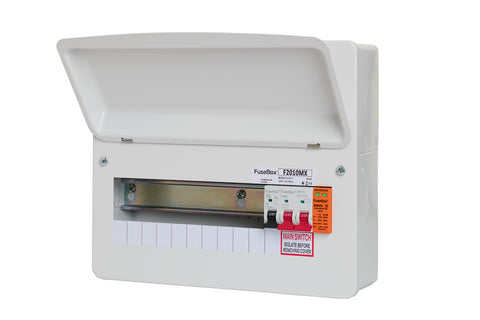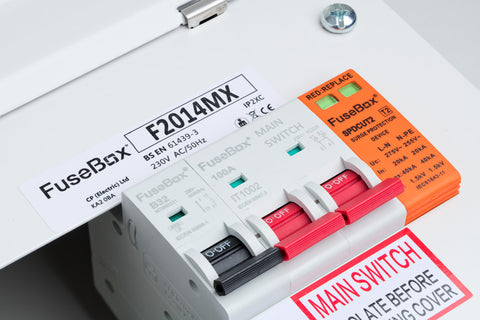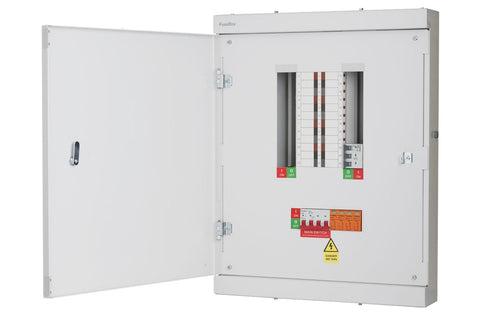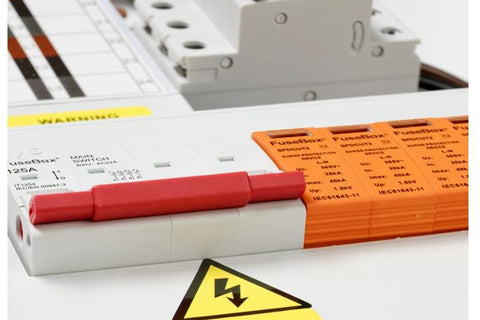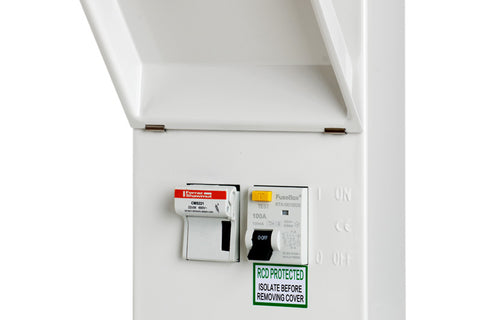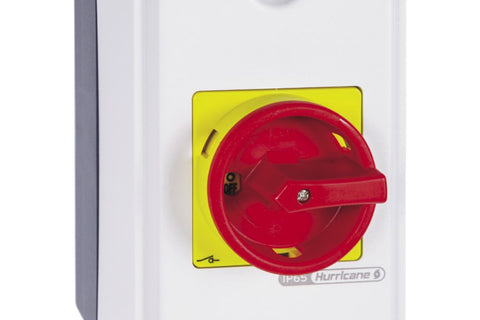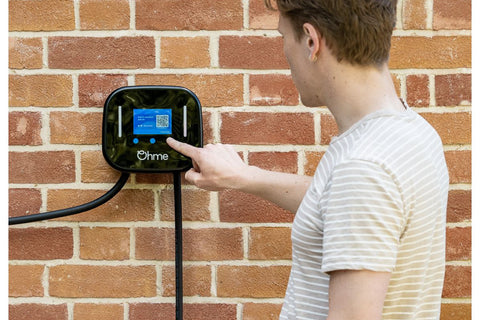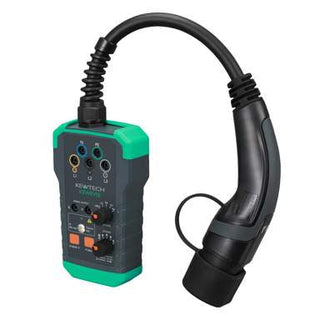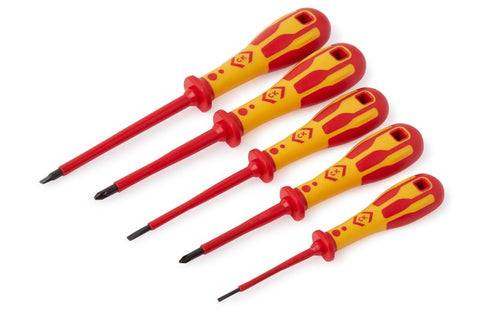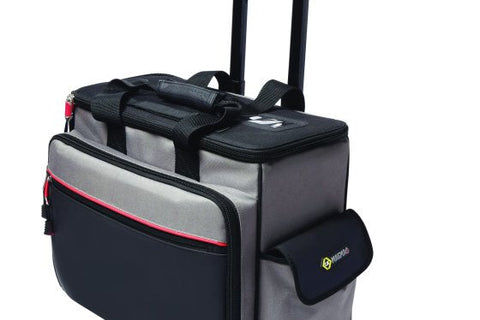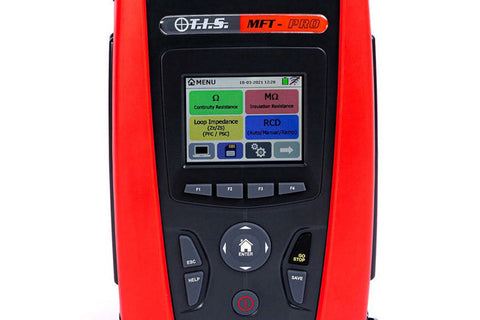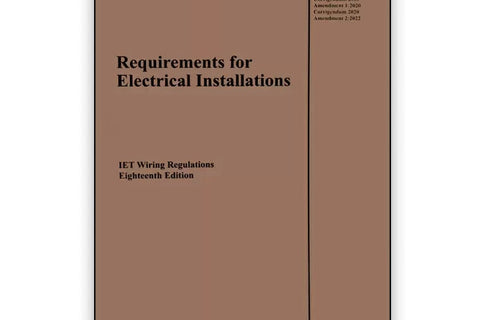Choosing A Consumer Unit
What is a consumer unit and what does it do?
The consumer unit is the most important piece of electrical equipment in every single building within the UK. Not only does it control and distribute power around your home, more importantly it protects humans from potential electric shock and death. It is essential you know where this is in your home in the case of an emergency.
The Components in a Consumer Unit

- Enclosure - This is the 'box' all of the relevant accessories are housed in. Since the introduction of 18th edition all new installations must be in a steel enclosure.
- Earth Bar - This is the common connection point for all circuits' earth cables. All circuit protective conductors will connect on the earth bar along with earth bonding connections.
- Neutral Bars - The common connection point for the neutral cables from the earth leakage protection devices (RCBOs).
- Din Rail - This is the metal bar that all circuit protection devices mount too, they usually clip on very easily. This sits on the inside back of the consumer unit, facing outwards. It does not carry any electrical current.
- Busbar - You probably won’t ever see the busbar, It is a long strip of copper, which has big 'teeth' on it to lock the circuit breakers and main switch securely.
- Main Switch - The main switch controls the electrical supply in your home, and allows you to isolate all circuits by simply turning it on and off. Everything within your consumer unit is controlled by the main switch.
- MCB - Also know as Mini Circuit Breakers protect appliances from overload. They come in a range of amperages from 6a to 50a in domestic installation. Nowadays a 32amp is used to protect an SPD which is installed in the fusebox.
- RCD (Residual Current Device) - An RCD protects humans against electric shock by measuring the total outgoing current against the total incoming current. If the two change and become different this means there is a problem and electricity has gone missing - this is known as 'earth leakage'. The RCD will then cut the power to all circuits protected by the RCD. These devices are becoming less common due to RCBO main switch boards being preferred because of regulations and safety.
- RCBO (Residual Current Overload) - An RCBO is an itelligent bit of kit which combines the functions of both an MCB and RCD, protecting against both overload and earth leakage. They are now the most popular choice for electricians due to the added safety, although they initially cost more their fucntionality and safety features outweigh going to the rcd/mcb route.
- Blanks - Blanks are pieces of plastic which clip to the din rail in just the same way as any circuit protection device and allow for future changes and additions to the circuit design. Imagine the home owner adds a circuit of outdoor lighting for example - the consumer unit and busbar are ready to accept the MCB which would protect this circuit without any reconfiguration of the consumer unit.
-
SPD - Surge Protection Devices - They are now a requirement as part of the 18th edition regulations as it protects against surges into the electrics from outside the building. Usually caused by lightning strikes, but can be caused by power surges from elsewhere down the electrical network, when this happens into your domestic fuse board can be devastating to your home’s wiring. SPDs are installed between the outside feed and the main switch in your consumer unit and will trip if any inward surge is detected.
-
AFDD - Arc Fault Detection Device - Arc Fault Devices were created for scenarios when and if the current is high enough, electrical currents jump the gap between two conductive materials. Arcs can reach temperatures of up to 5000 degrees and are the reason for just over half of the domestic house fires within the UK. Reasons for this include damaged cables from rodent damage, degradation, crushed cables, loose connections and installations by unqualified people/cowboys. AFDDs are likely to become mandatory in the near distant future as further protection against fires caused by faulty domestic wiring.

Different Types Of Consumer Unit
Main Switch Consumer Units - These are by far the most popular type of installation now because of the updates to the 18th edition regulations. The benefit of having a main switch fusebox is that they are populated with RCBO's which means each circuit is protected from earth leakage and overload. These types of board are bought unpopulated and you buy the RCBO's and accessories separately.
Dual RCD Consumer Units - Dual RCD boards are supplied with a main switch and two RCDs. Consideration must be given to circuit design in this scenario. You should not, for example put all the lighting circuits on the same RCD as if a fault ever occurs then the RCD will turn off all the whole bank of MCB's its protecting. This will mean you will be in complete darkness whilst trying to resolve the issue.
RCD Incomer Consumer Unit - These boards are predominantly used in garages and sheds. The big difference between this type of board and others is it doesn't have a main switch. The main way to isolate this type of board is via the single RCD.
EV Charging Boards - When you are having an EV charger installed it is not as simple as having a charger installed an away you go. It will have to be connected to your homes consumer unit but for ease and separation of circuits it is advised to have one of these boards installed.

Things To Look Out For
- If your house still has a plastic consumer unit installed, then look carefully for any cracks around the housing of the unit or if you can smell burning/ hear crackling sounds (This could be arcing). If any of the signs or present call a fully qualified electrcian ASAP!
- If your consumer unit is tripping continuously then there is obviously a problem to one circuit or more. Again in this scenario it is very important you call a fully qualified electrician to sort out the issue immediately.
- To check that your whole house electrics and wiring are safe you should have a periodic inspection every 10 years, carried out by a.. you guessed it! Fully qualified electrician!
- It is also good from time to time to just open to the lid to your consumer unit and check there are no cables exposed.
Is FuseBox A Good Brand?
Our website is dedicated to CP Fusebox, a leading brand within the distribution industry. We highly recommend their boards due to the proven quality of the product, they are cost effective and come on, who doesn't like pink?

